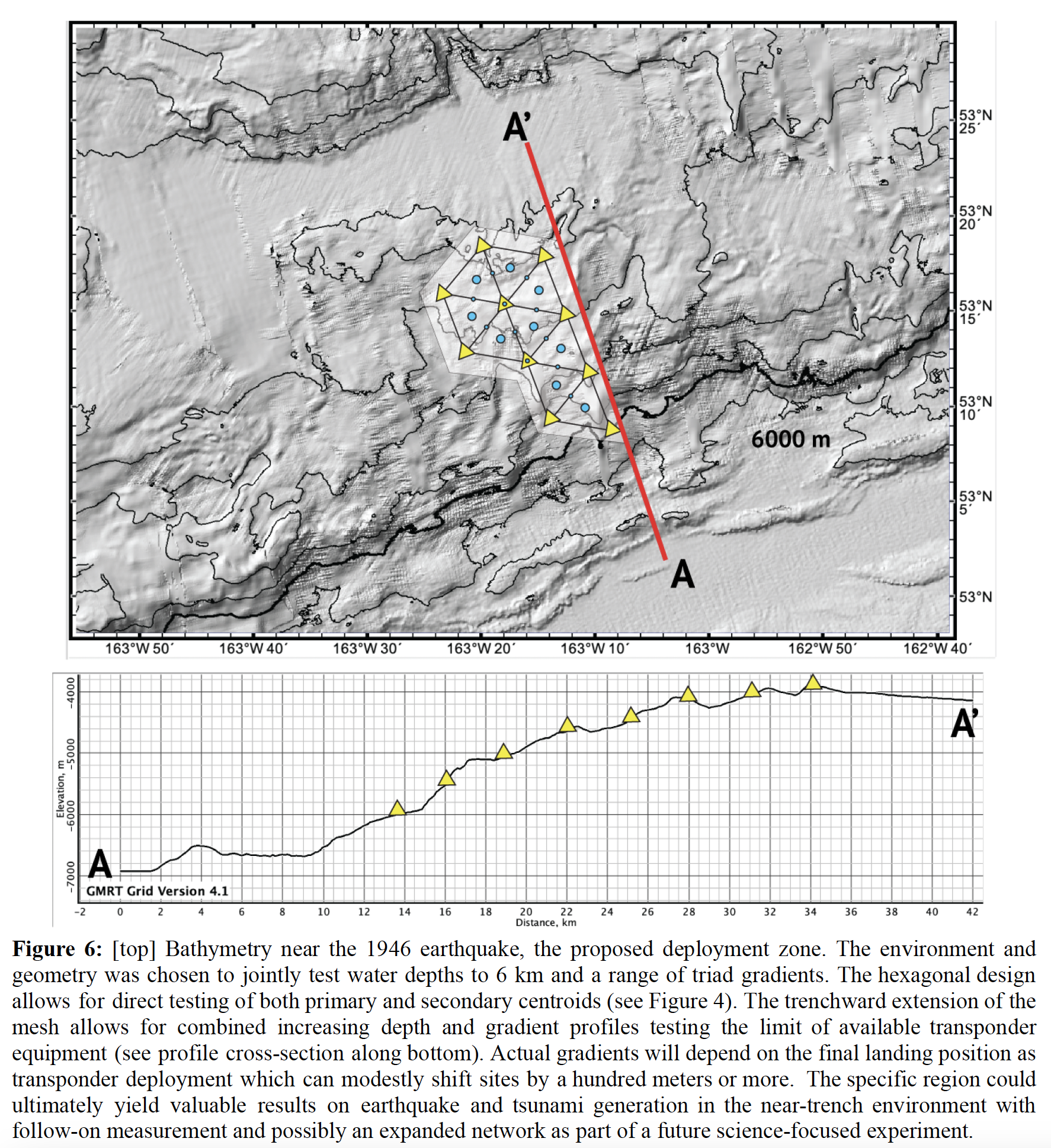Seafloor Geodesy in Alaska
My grad student, Nathalie Chavarría, and I are on-board the RV Sikuliaq at the moment deploying a bunch of transponders and a couple of autonomous surface ve...
Update: The Postdoc position is now open for applications. You can apply here, and please feel free to contact me to discuss the position.
I was recently awarded funding for an exciting new technical experiment to push the limits of what we can do with GNSS-Acoustic-based seafloor geodetic observations. In the experiment, we are buying and deploying a new Wave Glider and 10 new transponders for deployment in the near-trench environment that are expected to be most responsible for large tsunamis.
Over three years we will specifically be testing (1) deep-water measurements using lower frequency transponders than commonly used, (2) observations that include high gradients of change across the seafloor, and (3) the application of a mesh-network design that can dramatically reduce the cost of observations where dense deformation data are helpful.
The deployment will occur in June/July 2024 on the RV Sikuliaq, during the initial deployment of instrumentation in Alaska for the Community Near-trench Geodetic Experiment. We will commence observations then, with a second Wave Glider deployment planned for 2025.
My co-investigators are Mark Zumberge at UCSD-Scripps, and Surui Xie at University of Houston. We will soon be looking for a postdoc to manage the data processing associated with this experiment.
A little more detail can be gained from the below image I pulled from the proposal.
 The proposed experiment design.
The proposed experiment design.
My grad student, Nathalie Chavarría, and I are on-board the RV Sikuliaq at the moment deploying a bunch of transponders and a couple of autonomous surface ve...
We just published a paper, lead by recent graduate Louisa Barama, on a machine learning method to automatically and rapidly characterize seismic signals by s...
Update: The Postdoc position is now open for applications. You can apply here, and please feel free to contact me to discuss the position.
We are nearing the end of a little boat-based field research to help understand how faults lock-up and generate some of the world’s largest earthquakes and t...
We are just now wrapping up GPS/GNSS Field work and some training along the Kivu Rift in Rwanda.
Congratulations Louisa Barama for successfully defending your PhD Thesis yesterday afternoon on “Advanced Methods for Real-Time Identification and Determinat...